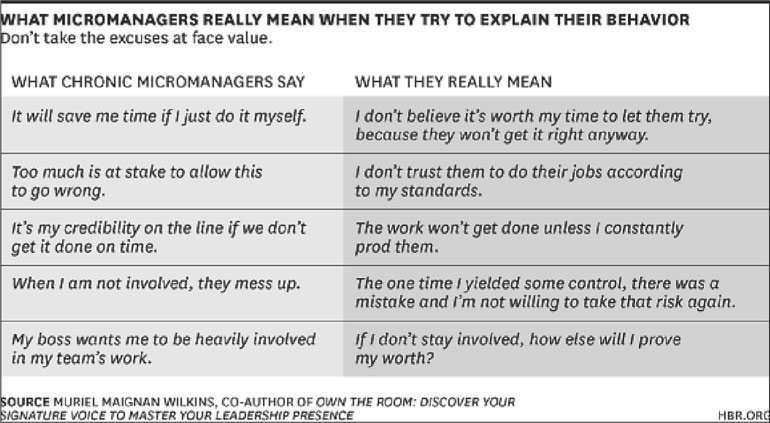Friday Jan 02, 2026
Friday Jan 02, 2026
Monday, 4 May 2020 00:00 - - {{hitsCtrl.values.hits}}

Absolutely no one likes to be micromanaged. It’s frustrating, demoralising, and demotivating. Yet, some managers can’t seem to help themselves. Dealing with a controlling boss who doesn’t trust you is tough, but what if you’re the one doing the micromanaging?
If you’re like most micromanagers, you probably don’t even know that you’re doing it. Yet the signs are clear:
Let’s face it. Paying attention to details and making sure the work is getting done are important. So it’s easy to chalk all of the above up to a necessary part of managing. But they aren’t necessary all the time. The problem with micromanagers is that they apply the same level of intensity, scrutiny and in-your-face approach to every task, whether warranted or not. The bottom line is: you need to stop. It’s harming your team’s morale and – ultimately – their productivity.
While micromanaging may get you short-term results, over time it negatively impacts your team, your organisation, and yourself. You dilute your own productivity and you run out of capacity to get important things done. You stunt your team members’ development and demoralise them. You create an organisational vulnerability when your team isn’t used to functioning without your presence and heavy involvement.
So what do you do if you want to stop micromanaging? Here are four strategies to help:
1. Get over yourself. We can all rationalise why we do what we do and the same holds true for micromanagers. The given table depicts some common excuses that chronic micromanagers give, and what they ‘really’ mean.
These excuses lead to a disempowered, demoralised team. Instead of finding all the reasons why you ‘should’ micromanage, consider why you shouldn’t.
2. Let it go. The difference between managing and micromanaging is the focus on the “micro.” At the core of moving away from micromanaging is letting go of the minutia. This can be hard, but the key is to do it a little at a time. Start by looking at your to-do list to determine what low hanging fruit you can pass on to a team member. Engage in explicit discussions with your direct reports about what level of detail you will engage in and where they will need to pull you in. You should also highlight the priorities on your list — the big ticket items where you truly add value — and make sure that is where you are spending most of your energy.
3. Give the ‘what’, not the ‘how’. There is nothing wrong with having an expectation about a deliverable. But there’s a difference between sharing that expectation and dictating how to get to that result. Your job as a manager is to clearly set the conditions of satisfaction for any task you assign.
Articulate what you envision the final outcome to look like, but don’t give blow-by-blow instructions on how to get there. When in doubt, share the “what” and ask (rather than tell) your team member about how they plan to get there. You might be surprised that their approach, while different, may yield excellent results.
4. Expect to win (most of the time). Underlying your need to micromanage is a fear of failure. By magnifying the risk of failure, your employees engage in “learned helplessness” where they start believing that the only way they can perform is if you micromanage them. It’s a vicious cycle. Instead, focus on setting your direct reports up for success. Be clear on what success looks like. Provide the resources, information, and support needed to meet those conditions. Give credit where credit is due. Over time, you’ll realise that a loss every now and then helps build a strong track record in the long run.
Just as no one wants to be micromanaged, no one wants to be the much-abhorred micromanager. But with a commitment to focus on the big picture and on motivating your employees, you can redirect your efforts to be the most effective manager you can be.